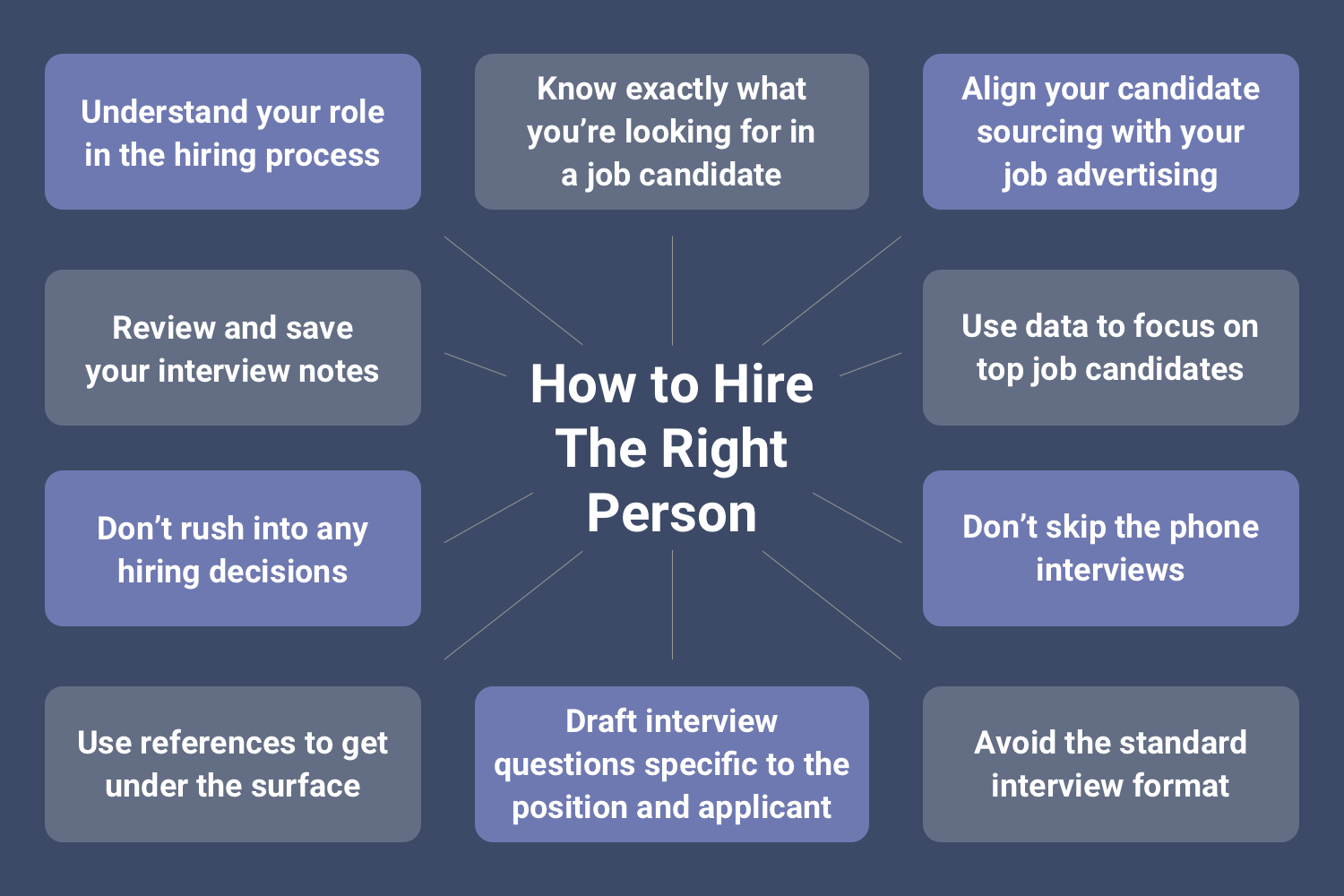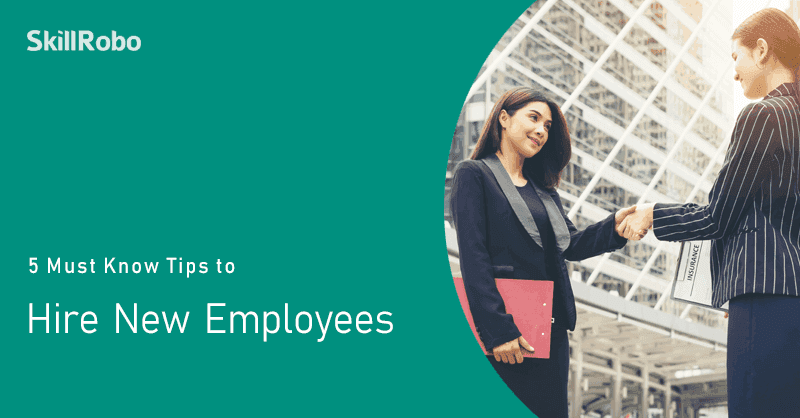Best Way To Hire Employees

So, you’re ready to build your dream team? Congratulations! Hiring your first employees is a massive milestone, signaling growth and new possibilities for your business. But where do you even start?
This guide is for first-time business owners and entrepreneurs navigating the often-overwhelming world of employee acquisition. We'll break down the best strategies for finding, attracting, and hiring the right people, helping you avoid costly mistakes and set your company up for success. Let's dive in!
Why Getting Hiring Right Matters
Your employees are the engine that drives your business. A strong, capable team can propel your company forward, while a poor hiring decision can lead to decreased productivity, increased turnover, and damage to your company's reputation.
Investing the time and effort to develop a solid hiring process isn't just good practice, it's crucial for sustainable growth. It sets the stage for a positive company culture and ensures you have the right people in place to achieve your goals.
Top 5 Hiring Methods: A Comparison
| Method | Price | Speed | Reach | Best For |
|---|---|---|---|---|
| Job Boards (Indeed, LinkedIn) | Free - Premium | Moderate | Wide | General roles, large candidate pool |
| Recruiting Agencies | High (Percentage of salary) | Fast | Targeted | Specialized skills, executive roles |
| Employee Referrals | Low (Potential bonus) | Moderate | Limited | Finding culturally aligned candidates |
| Social Media (LinkedIn, Twitter) | Low - Moderate | Moderate | Targeted | Specific industries, building brand awareness |
| Networking Events | Low (Event cost) | Slow | Limited | Local talent, building relationships |
Detailed Reviews of Hiring Methods
Job Boards
Job boards like Indeed and LinkedIn are the workhorses of the hiring world. They offer a wide reach and varying pricing options, making them accessible for businesses of all sizes. However, sifting through numerous applications can be time-consuming.
Pros: Broad reach, cost-effective, easy to use. Cons: High volume of applicants, can attract unqualified candidates.
Recruiting Agencies
Recruiting agencies specialize in finding talent, often for niche roles or executive positions. They handle the entire recruitment process, from sourcing candidates to conducting initial interviews. This comes at a significant cost.
Pros: Access to specialized talent, saves time, experienced recruiters. Cons: High fees, less control over the hiring process.
Employee Referrals
Leveraging your existing employees' networks can be a highly effective and cost-efficient way to find new hires. Referred candidates are often a better cultural fit and have a higher retention rate.
Pros: Cost-effective, higher quality candidates, improved cultural fit. Cons: Limited reach, potential for bias.
Social Media
Platforms like LinkedIn and Twitter can be used to actively search for candidates and build your employer brand. Engaging content and targeted advertising can attract top talent in your industry.
Pros: Targeted reach, build employer brand, cost-effective. Cons: Time-consuming, requires consistent effort, can be difficult to measure ROI.
Networking Events
Attending industry events and career fairs provides opportunities to meet potential candidates face-to-face and network with other professionals. This approach is particularly useful for finding local talent and building relationships.
Pros: Direct interaction with candidates, build relationships, find local talent. Cons: Time-consuming, limited reach, requires strong networking skills.
Used vs. New Hiring Methods: Pros and Cons
Think of "used" hiring methods as tried-and-true approaches like job boards and traditional advertising. "New" methods are those leveraging social media, innovative recruitment software, and more personalized outreach.
"Used" Hiring Methods
Pros: Established processes, readily available resources, predictable results. Cons: Can be less effective in today's competitive market, may attract a less diverse candidate pool.
"New" Hiring Methods
Pros: Attract a wider range of candidates, build your employer brand, can be more cost-effective in the long run. Cons: Requires more time and effort to implement, can be less predictable, may require new skills and tools.
Reliability Ratings by Method
Reliability in hiring refers to the consistency of finding qualified candidates and successful hires through a particular method. Some methods are more consistent than others.
- Recruiting Agencies: High Reliability (Due to expertise and screening processes)
- Employee Referrals: Moderate to High Reliability (Referred candidates tend to be a good fit)
- Job Boards: Moderate Reliability (Volume of applicants requires careful screening)
- Social Media: Moderate Reliability (Requires consistent effort and targeted strategy)
- Networking Events: Low Reliability (Limited reach, success depends on networking skills)
Checklist: 5 Must-Check Features Before Hiring
Before extending a job offer, ensure you've thoroughly evaluated the candidate based on these key features.
- Skills and Experience: Does the candidate possess the necessary skills and experience to perform the job effectively? Verify claims with skills tests and reference checks.
- Cultural Fit: Does the candidate align with your company's values and work environment? Assess their personality and work style during the interview process.
- Communication Skills: Can the candidate communicate clearly and effectively? Evaluate their verbal and written communication skills.
- Problem-Solving Abilities: Can the candidate think critically and solve problems independently? Use situational interview questions to assess their problem-solving skills.
- References: Always check references to verify the candidate's past performance and work ethic. Speak to multiple references if possible.
Key Takeaways
Choosing the best way to hire employees depends on your specific needs, budget, and the type of role you're filling. A combination of methods is often the most effective approach. Don't be afraid to experiment and adapt your strategy as your business grows.
Remember to prioritize cultural fit and communication skills alongside technical qualifications. Thoroughly vet candidates through skills assessments, interviews, and reference checks. A bad hire can be costly, so invest the time to get it right.
Ready to Build Your Dream Team?
By carefully considering the factors outlined in this guide, you can make informed decisions about how to hire your first employees. Take the time to plan your strategy, define your needs, and invest in the right tools and resources.
Good luck! Now go build your amazing team. Consider trying a combination of job boards and employee referrals to start, and track your results to optimize your hiring process over time. Don't hesitate to seek advice from experienced entrepreneurs or HR professionals as you navigate this exciting new chapter!
















![Best Way To Hire Employees How To Hire Employees: A Step-by-Step Guide [Updated for 2025]](https://d341ezm4iqaae0.cloudfront.net/assets/2018/03/28210648/Hiring_Business-02.png)
